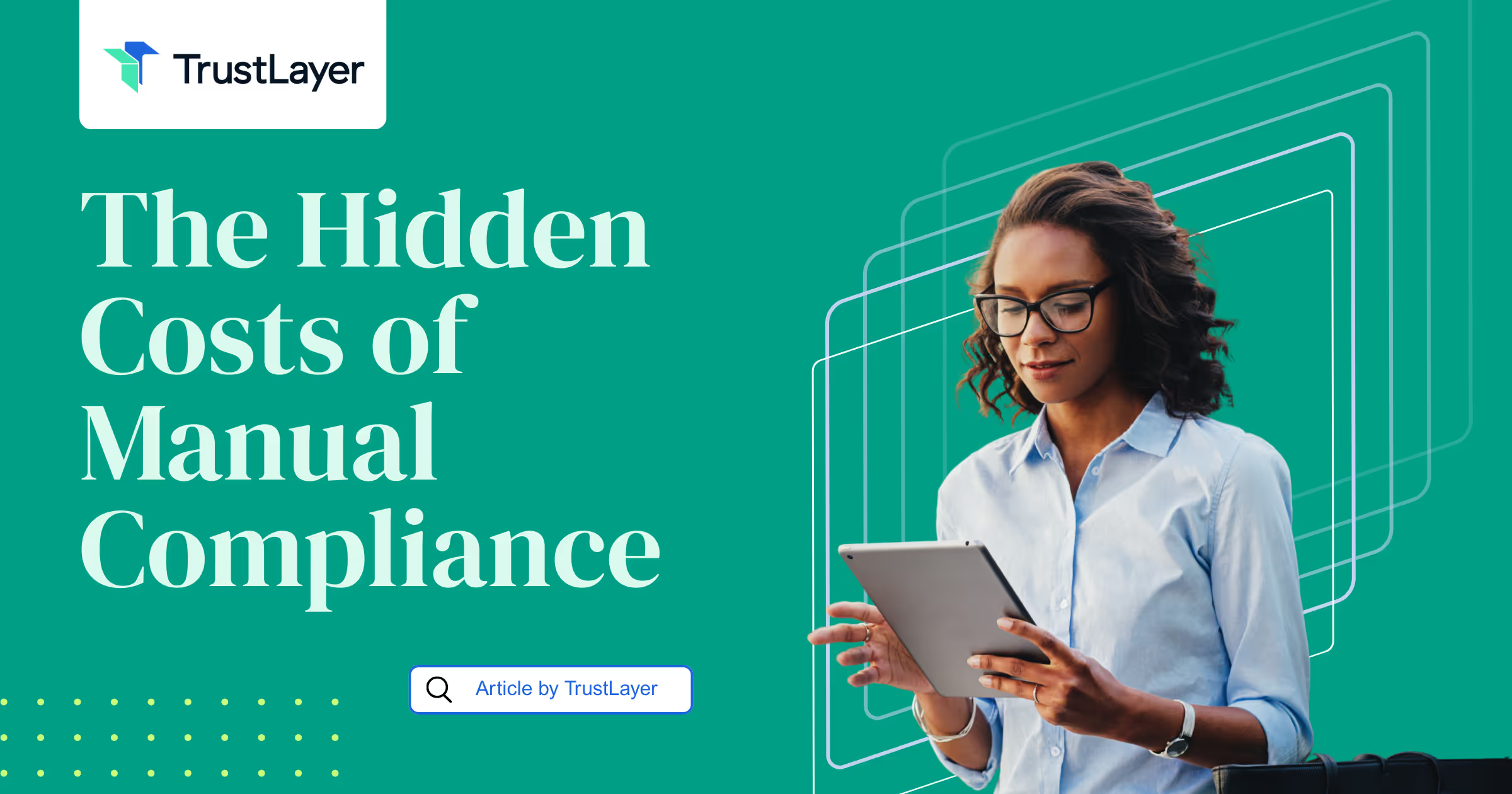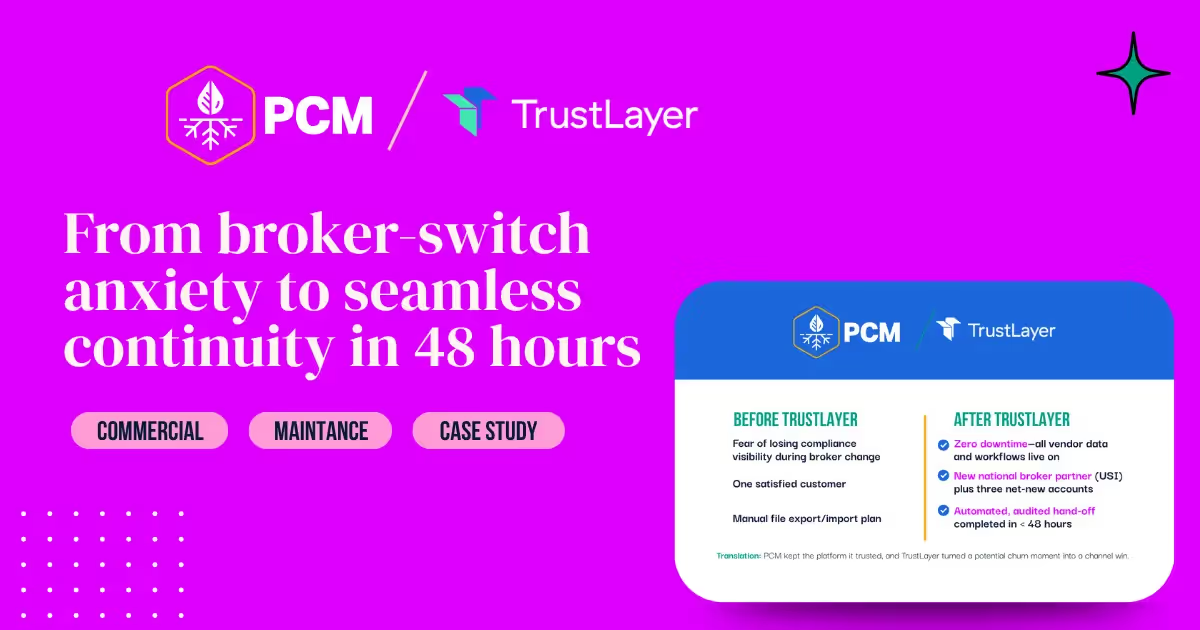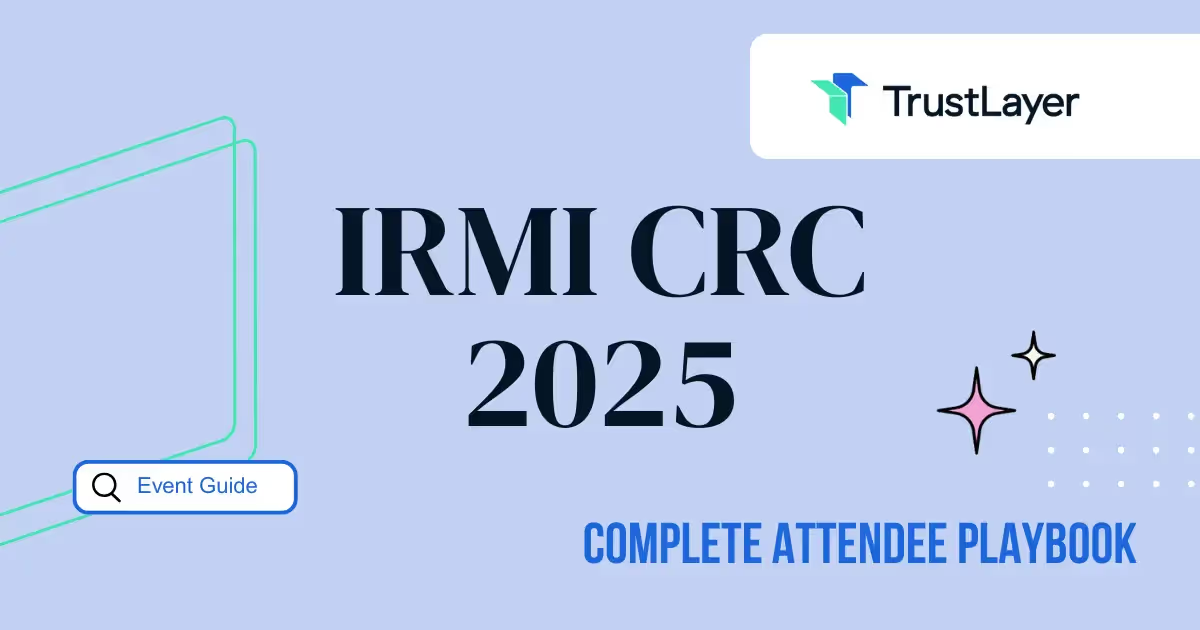Efficient COI Tracking Systems for Enhanced Risk Management
In today's business landscape, risk management is more important than ever. One key aspect of risk management is the tracking and management of Certificates of Insurance (COI). Efficient COI tracking systems play a vital role in mitigating risks and ensuring compliance. In this article, we will explore the significance of COI in risk management, the challenges associated with traditional tracking methods, the key features of efficient COI tracking systems, the benefits of implementing these systems, and how to choose the right COI tracking system for your business.
Understanding COI and Its Importance in Risk Management
Before diving into the world of efficient COI tracking systems, it's essential to understand what COI is and why it matters in the context of risk management. A Certificate of Insurance is a document that proves a business has valid insurance coverage. It typically includes details such as policy numbers, coverage limits, and policy effective dates.
COIs are crucial in risk management as they provide evidence of insurance coverage for businesses and help protect against potential liabilities. Whether it's a general liability policy, workers' compensation coverage, or professional liability insurance, having the right COIs in place ensures that businesses are adequately protected.
Defining COI in the Business Context
Within the business context, a Certificate of Insurance acts as proof of coverage for contractors, vendors, and other third-party entities that businesses engage with. It assures businesses that their partners have the necessary insurance to fulfill their obligations and protect against potential risks. Conversely, it also protects businesses from liabilities that may arise from partnering with entities that lack proper insurance coverage.
For example, in the construction industry, where subcontractors are commonly hired, a COI is essential. It ensures that subcontractors have the necessary liability coverage in case of accidents or property damage during the construction process. This not only protects the subcontractor but also safeguards the general contractor from potential legal and financial consequences.
In the healthcare industry, COIs play a critical role in risk management. Medical practitioners, hospitals, and healthcare facilities must have professional liability insurance to protect against malpractice claims. By requiring healthcare providers to provide COIs, hospitals and clinics can verify that their staff members are adequately insured, reducing the risk of legal and financial repercussions in case of medical errors.
The Role of COI in Risk Management
Effective risk management requires businesses to identify and assess potential risks, develop strategies to mitigate those risks, and implement mechanisms to monitor and control them. COIs play a pivotal role in this process by providing verifiable evidence of insurance coverage, which adds a layer of protection against unforeseen events.
By tracking and managing COIs, businesses can ensure that their partners are adequately insured, reducing the risk of financial loss stemming from legal liabilities. This is particularly vital in industries with inherently high-risk activities, such as construction, manufacturing, and healthcare.
Moreover, COIs also contribute to the overall risk management strategy by facilitating compliance with regulatory requirements. Many industries have specific insurance coverage mandates that businesses must adhere to. COIs serve as proof of compliance, ensuring that businesses meet the necessary legal obligations and avoid penalties or legal consequences.
Additionally, COIs can be used as a tool for risk assessment and evaluation. By thoroughly reviewing the coverage details provided in the COIs, businesses can identify any potential gaps in insurance coverage and take proactive measures to address them. This proactive approach helps minimize the likelihood of unexpected financial burdens resulting from inadequate insurance coverage.
Furthermore, COIs can also be utilized in contract management. When entering into contracts with third-party entities, businesses can include provisions that require the provision of valid COIs as a condition for engagement. This contractual requirement ensures that all parties involved are protected and that the risks associated with the business relationship are properly managed.
In conclusion, COIs are not just mere documents; they are essential components of risk management strategies. By understanding the significance of COIs in the business context and implementing effective COI tracking systems, businesses can enhance their risk management practices, protect themselves from potential liabilities, and ensure the overall resilience and sustainability of their operations.
The Need for Efficient COI Tracking Systems
While the importance of COI in risk management is evident, traditional methods of tracking and managing COIs can be time-consuming, error-prone, and inefficient. These methods often involve manually collecting and reviewing COIs, which can lead to delays and increase the risk of missing critical information.
Efficient COI tracking systems are essential for businesses to effectively manage their risks and ensure compliance with insurance requirements. These systems automate the collection, storage, and verification of COIs, streamlining the process and reducing the likelihood of errors or oversights.
Challenges in Traditional COI Tracking Methods
Traditional COI tracking methods present several challenges for businesses. Firstly, manually collecting and storing paper-based COIs can result in misplaced or lost documents, making it challenging to access the necessary information when needed. This not only wastes time but also hinders effective risk management.
Moreover, paper-based COIs are susceptible to damage or deterioration over time, compromising their legibility and reliability. This can lead to misunderstandings or disputes regarding insurance coverage, further complicating risk management efforts.
Furthermore, manually reviewing and verifying COIs can be a tedious and error-prone task. Businesses may struggle to keep track of expiration dates, coverage limits, and policy renewals. This lack of real-time visibility increases the risk of partnering with uninsured or underinsured entities, exposing businesses to unnecessary liabilities.
Additionally, the manual nature of traditional COI tracking methods makes it challenging to analyze and report on COI data effectively. Businesses may find it difficult to identify trends, assess compliance levels, or generate comprehensive reports for internal or external stakeholders.
The Impact of Inefficient COI Tracking on Risk Management
Inefficient COI tracking can have significant consequences from a risk management perspective. Relying on outdated systems or manual processes increases the likelihood of missing critical information, such as expired policies or policy changes. This can result in unexpected gaps in coverage, leaving businesses vulnerable to financial loss in the event of a claim or lawsuit.
Moreover, inadequate COI tracking impedes effective risk assessment and decision-making. Without real-time visibility into partners' insurance status, businesses may unknowingly engage with entities that lack the necessary coverage, exposing themselves to potential legal and financial risks.
Furthermore, inefficient COI tracking can strain business relationships and hinder collaboration. Inaccurate or delayed COI verification can lead to delays in project timelines, contract disputes, or even the termination of partnerships. This not only affects the bottom line but also damages the reputation and credibility of the business.
Efficient COI tracking systems offer a solution to these challenges by providing businesses with a centralized platform to manage and monitor COIs. These systems automate the verification process, ensuring real-time visibility into insurance coverage and expirations. This enables businesses to make informed decisions, mitigate risks, and maintain compliance with insurance requirements.
In conclusion, the need for efficient COI tracking systems cannot be overstated. By implementing automated COI tracking solutions, businesses can streamline their risk management processes, reduce errors, and enhance their overall operational efficiency. Investing in these systems is a proactive step towards protecting the financial well-being and reputation of the organization.
Key Features of Efficient COI Tracking Systems
To address the limitations of traditional COI tracking methods, businesses are turning to efficient COI tracking systems. These digital solutions automate and streamline the COI management process, providing businesses with real-time visibility and enhanced risk management capabilities.
Efficient COI tracking systems offer a range of key features that revolutionize the way businesses manage their certificates of insurance. Let's explore some of these features in more detail.
Automation and Real-Time Tracking
A central feature of efficient COI tracking systems is their automation capabilities. These systems use advanced algorithms and machine learning to automate the collection, verification, and monitoring of COIs. By doing so, they eliminate manual data entry and minimize human error, saving businesses time and resources.
Imagine a scenario where a business receives hundreds of COIs from various partners. With traditional methods, the process of manually entering and verifying each certificate can be tedious and prone to errors. However, with an efficient COI tracking system, businesses can simply upload the COIs into the system, and it will automatically extract the relevant information, verify the details, and update the records accordingly.
Real-time tracking is another invaluable feature of efficient COI tracking systems. These systems provide up-to-date information on policy expirations and any changes in coverage limits, ensuring businesses are always aware of their partners' insurance status. This real-time visibility enables prompt decision-making and minimizes the potential for coverage gaps.
For example, let's say a business is about to engage in a high-value project with a partner. The efficient COI tracking system will continuously monitor the partner's insurance status and notify the business immediately if there are any changes or expirations. This allows the business to take proactive measures, such as requesting updated COIs or adjusting contract terms, to ensure they are protected from any potential risks.
Integration with Other Business Systems
An efficient COI tracking system seamlessly integrates with existing business systems. This integration allows for the automatic transfer of data between systems, eliminating the need for duplicate data entry and reducing the risk of inconsistencies or inaccuracies.
For example, an efficient COI tracking system can sync with contract management platforms, enabling businesses to verify insurance requirements before entering into contracts. This integration streamlines processes and ensures that businesses are working with properly insured partners right from the start.
Furthermore, efficient COI tracking systems can integrate with accounting software, enabling businesses to easily track and manage insurance costs. The system can automatically calculate premiums, track payments, and generate reports, providing businesses with a comprehensive overview of their insurance expenses.
Integration with other business systems not only saves time and reduces administrative burden but also enhances data accuracy and consistency. Businesses can have confidence in the integrity of their COI records and make informed decisions based on reliable information.
In conclusion, efficient COI tracking systems offer automation, real-time tracking, and integration features that significantly improve the COI management process. By leveraging these systems, businesses can streamline operations, reduce risks, and ensure compliance with insurance requirements. Investing in an efficient COI tracking system is a strategic decision that can yield long-term benefits for businesses of all sizes.
Benefits of Implementing Efficient COI Tracking Systems
Implementing efficient COI tracking systems can yield numerous benefits for businesses, ultimately enhancing their risk management practices and safeguarding against potential liabilities.
Enhanced Risk Visibility and Management
Efficient COI tracking systems provide businesses with comprehensive risk visibility. By consolidating COIs into a centralized and easily accessible digital platform, these systems enable businesses to quickly identify potential risks, monitor policy compliance, and take proactive measures to reduce their exposures. For instance, an efficient COI tracking system can alert businesses when a partner's coverage is about to expire, allowing them to take immediate action to ensure continuous protection.
Improved Compliance and Regulatory Adherence
Regulatory compliance is a critical aspect of risk management. Efficient COI tracking systems streamline compliance by automatically verifying that partners meet the necessary insurance requirements. With real-time tracking and automated reminders, these systems minimize the risk of non-compliance and potential penalties associated with inadequate insurance coverage. TrustLayer, a leading provider of efficient COI tracking systems, offers cutting-edge solutions that help businesses stay compliant and adhere to industry regulations.
Choosing the Right COI Tracking System for Your Business
Selecting the right COI tracking system is essential to ensure optimal risk management and maximized business benefits. When evaluating potential COI tracking system providers, consider the following key factors:
Factors to Consider When Selecting a COI Tracking System
1. Automation capabilities: Look for a system that offers robust automation features to streamline the COI management process.2. Integration capabilities: Ensure that the system can integrate with your existing business systems, such as contract management platforms or CRM systems.3. Scalability: Choose a system that can scale with your business growth and accommodate your future needs.4. User-friendly interface: The system should be intuitive and easy to navigate, ensuring a smooth user experience for all stakeholders involved in the COI tracking process.5. Security measures: Data security is paramount. Ensure that the COI tracking system provider has robust data protection protocols in place to safeguard your confidential information.
Evaluating Potential COI Tracking System Providers
When evaluating COI tracking system providers, consider reputable industry leaders such as TrustLayer. TrustLayer's advanced COI tracking system offers cutting-edge automation capabilities, real-time tracking, and seamless integration with existing business systems. With TrustLayer, businesses can improve risk management practices, enhance compliance, and achieve peace of mind.
In conclusion, efficient COI tracking systems are essential for enhanced risk management. By automating the COI tracking process and providing real-time visibility, these systems enable businesses to reduce the risk of liability, ensure compliance, and make informed decisions. Implementing the right COI tracking system, such as TrustLayer, can transform risk management practices and propel businesses towards long-term success.
















